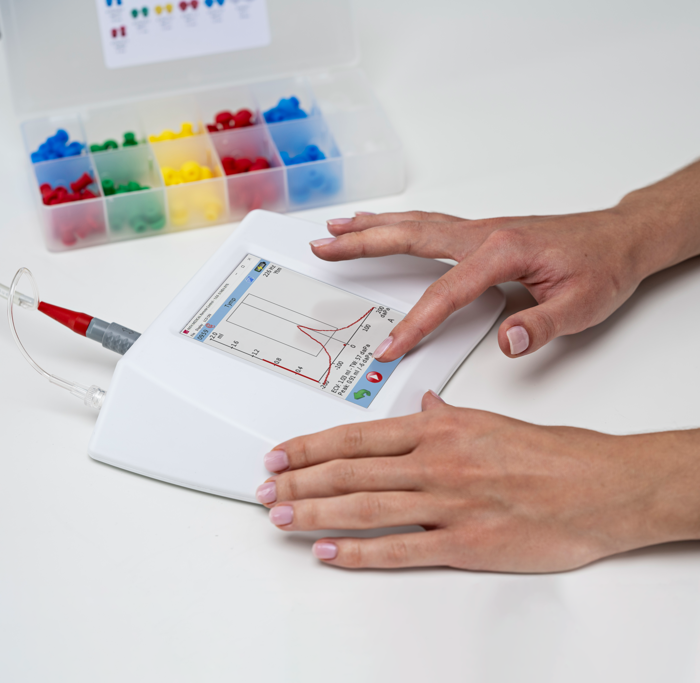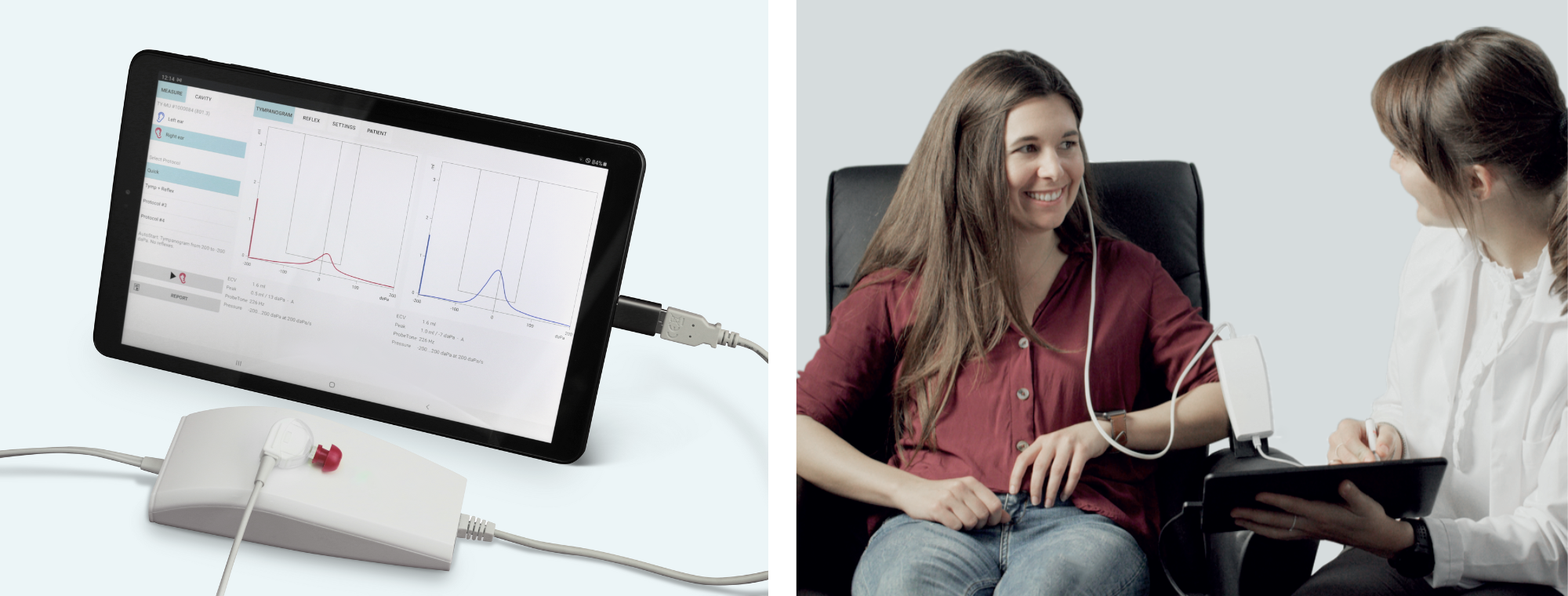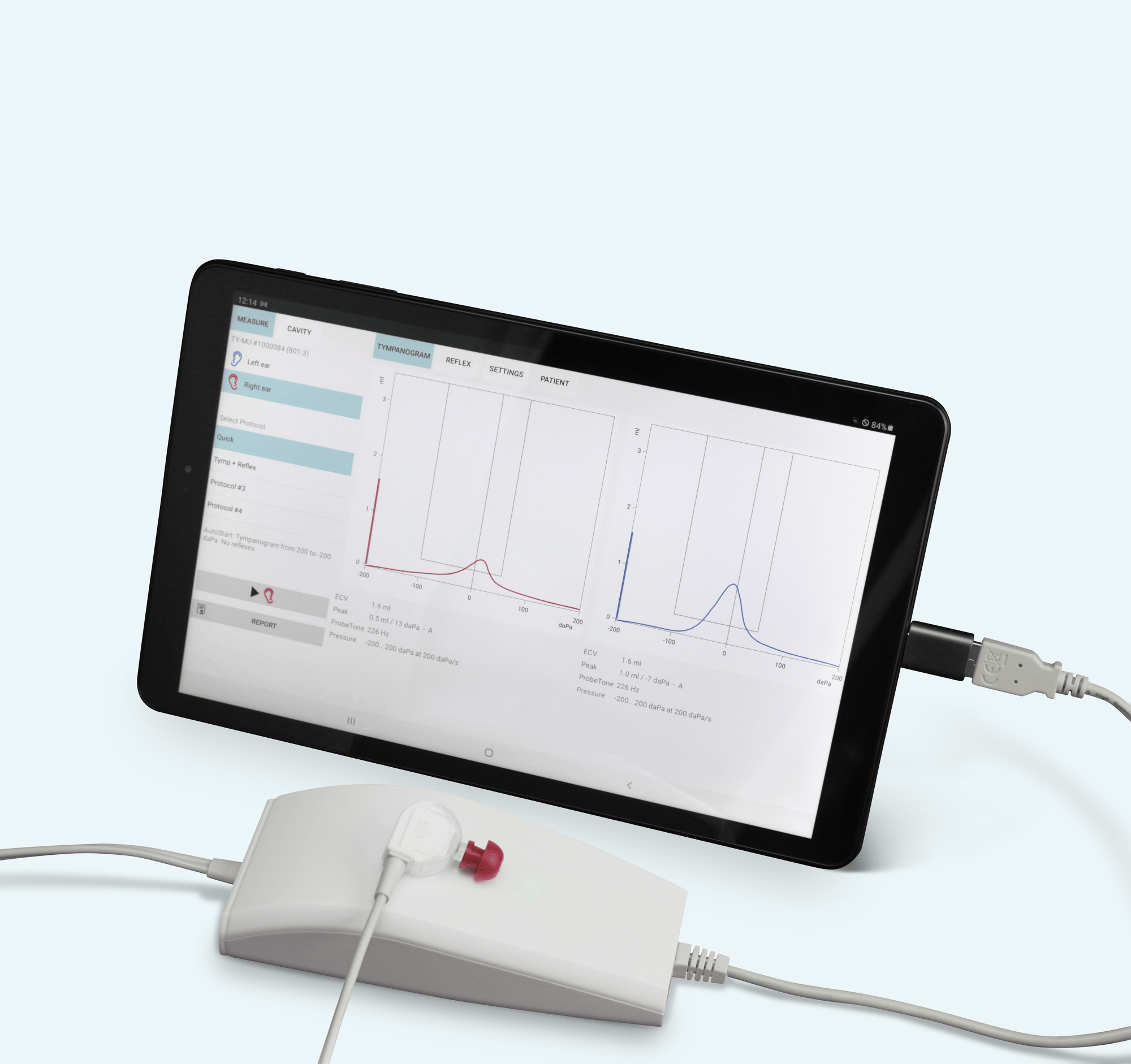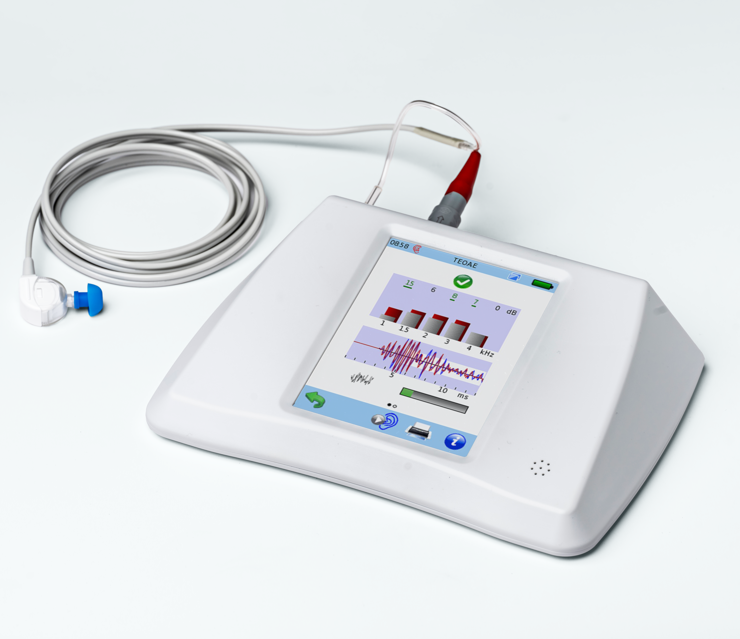Auditdata Measure
Diagnostic Tympanometers to Unlock Precision Hearing Tests
Whether you need a powerful standalone tympanometer that can expand to advanced diagnostics like OAE testing, or a streamlined PC-based system for quick and precise basic tympanograms, the Auditdata Measure suite has you covered.
Ready to elevate your practice?

Did you know that...
50% of Hearing Aids Are Returned Due to Poor Fit

Why Use Tympanometry for Hearing Assessments?
Tympanometry is a procedure that applies both positive and negative pressure to the middle ear while delivering a consistent probe tone. This test evaluates how much of the sound is absorbed by the middle and inner ear and how much is reflected back. By doing so, it provides the hearing care professional with valuable insights into the function and behavior of the tympanic membrane.
Identify Middle Ear Issues
Tympanometry helps detect problems like fluid in the middle ear, eardrum perforations, or eustachian tube dysfunction, all of which can influence hearing and overall ear health.
Guide Treatment Decisions
With detailed information about middle ear function, clinicians can make more informed treatment recommendations, whether it’s medical intervention, hearing aids, or further diagnostic tests.
Complement Other Hearing Tests
By assessing the mobility and pressure of the middle ear, tympanometry complements pure tone audiometry and other diagnostic tools, offering a more comprehensive picture of hearing conditions.
Non-Invasive and Quick
Tympanometry is a fast, simple, and non-invasive procedure, making it easy to integrate into routine hearing assessments while delivering highly informative results.

PC-Based Tympanometer
Our PC-based tympanometer is a versatile tool for diagnosing middle ear pathologies in patients of all ages, from pediatrics to adults. The device combines ease of use with advanced diagnostic capabilities, ensuring rapid and accurate results. With the included software, test results and patient data can be seamlessly printed or transferred via PDF to an electronic medical record. The simple USB connection allows for real-time previewing of both ears and quick, full-color printouts.
Featuring the standard 226 Hz probe tone, and an optional 1000 Hz tone, it offers exactly what is needed for reliable tympanometry.
Standalone Tympanometer
The Measure Standalone Tympanometer is a battery-operated, portable diagnostic tympanometer that offers unparalleled flexibility and top-of-the-line features.
With high-frequency 1000 Hz tympanometry, multi-frequency tympanometry, ipsi/contralateral acoustic reflex testing, and Eustachian Tube functionality (ETF) testing, a comprehensive assessment of middle ear functionality is at your fingertips. For further flexibility, the system can be also configured to measure otoacoustic emissions (OAEs), including FMDPOAE®, TEOAE, and pressurized OAEs. With these tests, the clinicians have access to an even more detailed assessment of patients' middle and inner ear function.

Why Choose Our
Portable Diagnostic Tympanometers
Portability and Convenience
Enjoy the flexibility of both stand-alone and PC-based tympanometers, designed to be compact and portable. Perfect for use in clinics or while on the go.
Comprehensive Assessment
Both models provide full middle ear diagnostics, including high-frequency tympanometry. The stand-alone tympanometer offers additional capabilities, such as contralateral reflex testing and optional OAE expansion.
Ease of Use
With a single probe for all tests, a probe fit indicator light, and an intuitive interface, both the stand-alone and PC-based tympanometers are designed for simplicity and accuracy in middle ear assessments.

Online Training Programs
Customized solutions and onboarding based on your objectives. With online training, your team will receive extensive onboarding and training of your Measure solution.

Self-Study E-Learning Courses
Streamline training of your employees with our extensive e-learning course and make learning more efficient. Standardizing training ensures all employees receive the same, high-quality experience.

Tailored Support and Onboarding
Our all-inclusive onboarding is specifically designed to align with your practice's needs, ensuring a seamless integration of our Measure software and hardware.
Frequently Asked Questions
How To Choose Between Our Tympanometers?
-
Choosing a tympanometer depends on factors like the type of assessments you want to perform, range of test frequencies, ease of use, data storage options, and whether you need additional functions like reflex testing or handheld portability.
The PC-Based tympanometer is a great option for those looking for a simple tympanometer for tympanometry, high-frequency and reflex testing.
|
|
PC-Based | Standalone |
|
Tympanometry |
✔ |
✔ |
|
High Frequency Tympanometry |
✔ |
✔ |
|
Reflex Testing |
✔ |
✔ |
|
Multi-Frequency Tympanometry |
|
✔ |
|
Eustachian Tube Testing |
|
✔ |
|
TEOAE |
|
✔ |
|
DPOAE |
|
✔ |
|
Battery Operated |
|
✔ |
|
Display |
|
✔ |
Which Assessments Can I Perform?
-
Tympanometry
Tympanometry at 226 Hz is a standard diagnostic test used to evaluate middle ear function for adults and children.
-
1000Hz Tympanometry
Tympanometry at 1000 Hz is used to evaluate middle ear function for infants under 6 months of age as their middle ear resonance differs from adults. Clinicians can also glean more information regarding adult middle ear status with this method.
-
Acoustic Reflexes
Acoustic reflexes measure the contraction of the stapedius muscle in response to loud sounds. As this process involves the cochlear nerve as well as the middle ear, it can provide diagnostic information throughout the auditory system.
-
Acoustic Reflex Decay
Acoustic reflex decay examines the auditory system’s ability to maintain the muscle contraction seem in the acoustic reflex. This test is used to help differentiate between cochlear and retrocochlear pathology.
- DPOAE/TEOAE
Otoacoustic emissions, including distortion product (DPOAE) and transient evoked (TEOAE) measure the response from hair cells in the cochlear to soft sounds. Clinicians can obtain information on inner ear function using this method, even in individuals who cannot respond behaviorally
-
FMDPOAE® Pressurized OAEs
Evaluate inner ear function despite middle ear pathology. With FMDPOAE pressurized OAEs, clinicians are able to obtain OAE results in individuals with negative middle ear pressure.
-
Contralateral Acoustic Reflexes
Taking advantage of the acoustic reflex and the crossover that occurs in the auditory pathway, contralateral acoustic reflexes can help to differentiate between cochlear and retrocochlear pathologies.

A Commitment to Compliance
We comply with the data protection and privacy laws applicable to our business activities. Auditdata has ISO-27001 and ISO-13485 certifications as well as EC certificates to ensure credibility and trust for our customers, clients and business partners.
Ready To Get Started with Tympanometry?
Request a quote and see how you can drive
business decisions forward while optimizing
best-in-class patient care.